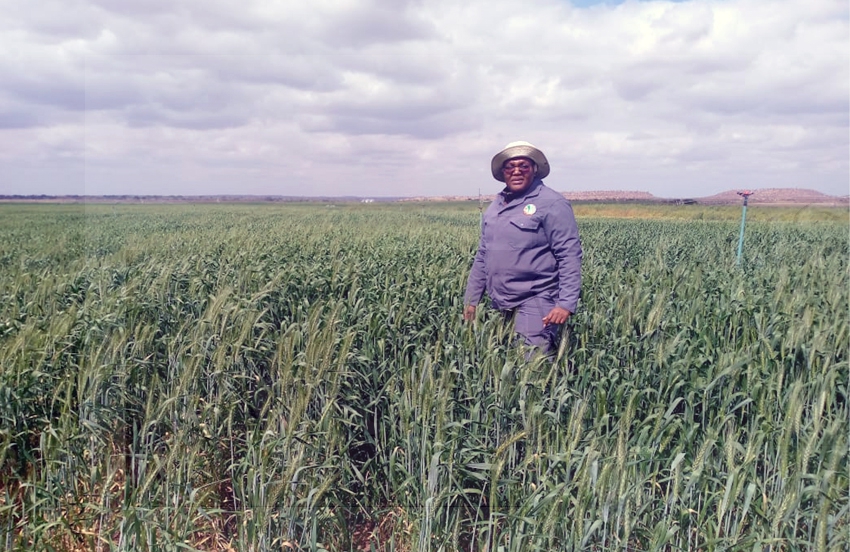Basarwa hut Scientific masterpiece
06 Jan 2025
Central Kalahari Game Reserve (CKGR), Botswana’s best-kept secret is undoubtedly a gateway to the world of wonders.
It is a haven of pure and magnificent wilderness. A drive into this reserve presents a stunning imagery of the Kalahari, pristine and untouched wilderness where the impact of modernity is almost null.
As we cruise around the park in a 4X4 Toyota Land cruiser exploring the reserve, it dawns on me that this perhaps is one of Botswana’s untapped tourism safari experiences and one of the last few corners of the earth, where many species of wildlife such as lions, elephants, giraffes, cheetah, leopard, gemsbok, and elands coexist with humanity in their natural habitat.
The vastness, isolation and inimitable vernacular architecture presents a picturesque of stunning beauty of settlements inside the reserve in sync with the environs. I am startled by seeing in reality the Basarwa hut for the first time in the natural form.
My attention is drawn to the style of the dome shaped simple yet intricate hut made of natural resources like grass, shaped and supported by logs of tree branches acquired from the very surroundings.
The thatched hut has distinctive qualities designed to reflect their way of life and shield them from the harsh arid climatic conditions.
As we go along, I rapidly apply sunscreen as the scorching sun is unforgiving with the temperature clocking about 39 degrees Celsius. We finally enter our destination inside the park after a 12 hour drive from Ghanzi at Metsiamanong settlement inside the CKGR for the burial of the late Pitseng Gaoberekwe.
After setting up our tents, I make sure to get a feel of this hut especially that my tent was restlessly hot.
The tent became better in the evening when the sun had gone down.
This hut has tickled my imagination, and the next morning I could not wait to ask to feel this hut. Getting in requires one to have flexible hip joints. I had to bend my body structure about 90 degrees to enter the small opening to the hut.
And once in the hut, the temperature drops drastically. My skin begins to feel cooler, my sweat begins to dry out as I begin to have a chat with Basarwa women seated inside. For a short while, My temperature problems were sorted. I felt at home and did not want to go outside the hut.
“The idea came from our forefathers who were nomadic hunter-gatherers. They built these temporary huts by intertwining branches and cover them with woven grasses from bottom to the roof” said 96-year-old Mosarwa elder Gakeorore Dichake who I found seated with some of her family members inside the hut.
“In summer the hut becomes cool as you can see and in winter it becomes warm. We can even make fire inside to keep it warm. In summer we keep water inside an ostrich egg shell and it becomes so cool,” she said.
Dichake explained that the bottom part of the house is not covered with grass but is rather left with logs tied together leaving no openings.
The design of the hut enables the smoke from the fire to leave the hut through some openings.
“Building a strong hut that can be able to withstand rain, wind and heat and winter requires one to assemble building materials carefully, if not it can leak during rainy season.
During thatching we tie the grass accordingly to prevent wind destroying, the thatching at the top is the most complicated as it must dropped down in a triangular to direct the flow of water,” Chiped in 54-year-old Kasetlhophelwa Kaingotla.
She asserted that building the hut requires indigenous knowledge technical expertise. “When we build we leave a very small opening as a door which is meant to control air circulation and amount of light entering the house.
The door opening is positioned strategically usually facing the west where the wind direction is usually not strong,” she says.
According to her the hut can serve as a cooking area, bedroom, bathroom and a living room. In cases of large families, one can comfortably sleep outside to enjoy the cool air, “During heavy downpours in rainy seasons we cook inside the hut but when it is not raining we cook in the open.”
“These structures play a significant role in modern day society because they have excellent bioclimatic characteristics and are veritable examples of architectural sustainability,” said historian Dr Jeff Ramsey in an interview.
He noted that Basarwa have been around from time immemorial before the evolution of science, surviving on what nature provides for them such as wildlife, melons, wild berries and tubers, which store water and could, provide enough nourishment for their sustenance.
They adapted to their environment for thousands of years as survival impressed upon humanity to devise means of survival through application of indigenous knowledge, he said.
“In the 1960 when CKGR was demarcated as a reserve by the then British Bechuanaland Protectorate, Basarwa lived there and as the game reserve developed its regulations, hunting could not be permitted inside the game reserve, Botswana government then gave special hunting licenses to Basarwa,” noted Dr Ramsey. Ends
Source : BOPA
Author : Calviniah Kgautlhe
Location : Molapo
Event : Interview
Date : 06 Jan 2025






